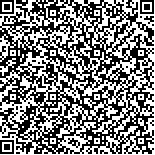| 摘要: |
| 分析了2003年12月至2004年10月胶州湾18个站位7个航次的浮游藻色素组成(包括叶绿素和类胡萝卜素)。使用岩藻黄素、多甲藻黄素、色素组合(别黄素+19'-丁酰氧基岩藻黄素+19'-己酰氧基岩藻黄素+青绿藻黄素)和玉米黄素作为特定功能类群的诊断色素指标定义了四个浮游藻功能类群(PFTs), 即硅藻、甲藻、微型鞭毛藻和蓝细菌, 并根据各浮游藻功能类群的诊断色素(组合)占诊断色素总量的比例研究了各功能类群在胶州湾的时空分布特点, 结果表明硅藻是胶州湾的优势类群(平均占65.8%), 微型鞭毛藻次之(26.0%), 甲藻和蓝细菌最低(分别为6.3%和1.9%)。基于诊断色素指标的浮游藻功能类群分析是一种简便的判断优势浮游藻类群组成和丰度的方法。 |
| 关键词: 石油烃 营养盐 浮游植物 吸收动力学 |
| DOI:10.11693/hyhz201304007007 |
| 分类号: |
| 基金项目:国家自然科学基金面上项目, 40676068号和国家自然科学基金青年基金项目, 40806029号。 |
附件 |
|
| FUNCTIONAL TYPES OF PHYTOPLANKTON IN JIAOZHOU BAY USING DIAGNOSTIC PIGMENT ANALYSIS (DPA) |
|
YAO Pen1, YU ZHhi-Gang1, DEN Chun-Mei2, LIU Shu-Xia1, ZHEN Yu3
|
|
1.Key Laboratory of Marine Chemistry Theory and Technology, Ministry of Education, College of Chemistry and Chemical Engineering, Ocean University of China;2.Key Laboratory of Marine Spill Oil Identification and Damage Assessment Technology, State Oceanic Administration North China Sea Environment onitoring Centre, State Oceanic Administration;3.Key Laboratory of Marine Environment and Ecology, Ministry of Education, College of Environmental Science and Engineering, Ocean University of China
|
| Abstract: |
| Phytoplankton pigment composition (chlorophylls and carotenoids) was analyzed to determine the distribution of pigments and plankton in 18 stations over 7 cruises during Dec. 2003 to Oct. 2004 in Jiaozhou Bay, China. Four phytoplankton functional types (PFTs), i.e. diatoms, dinoflagellates, nanoflagellates, and caynobacteria were defined using characteristic pigments as diagnostic pigment indices (characteristic properties) of particular PFTs. The spatial-temporal distribution of each PFTs in Jiaozhou Bay was analyzed based on the proportion of each diagnostic pigment in the diagnostic pigment pool. The results showed that the dominated PFTs in the bay were diatoms (65.8% in average), followed by flagellates (26.0% in average), and dinoflagellates and cyanobacteria (6.3% and 1.9%, respectively). Analysis on PFTs based on diagnostic pigment indices provides a simple and easy way to identify the composition and abundance of dominated phytoplankton groups. |
| Key words: petroleum hydrocarbon nutrients phytoplankton uptake dynamics |
